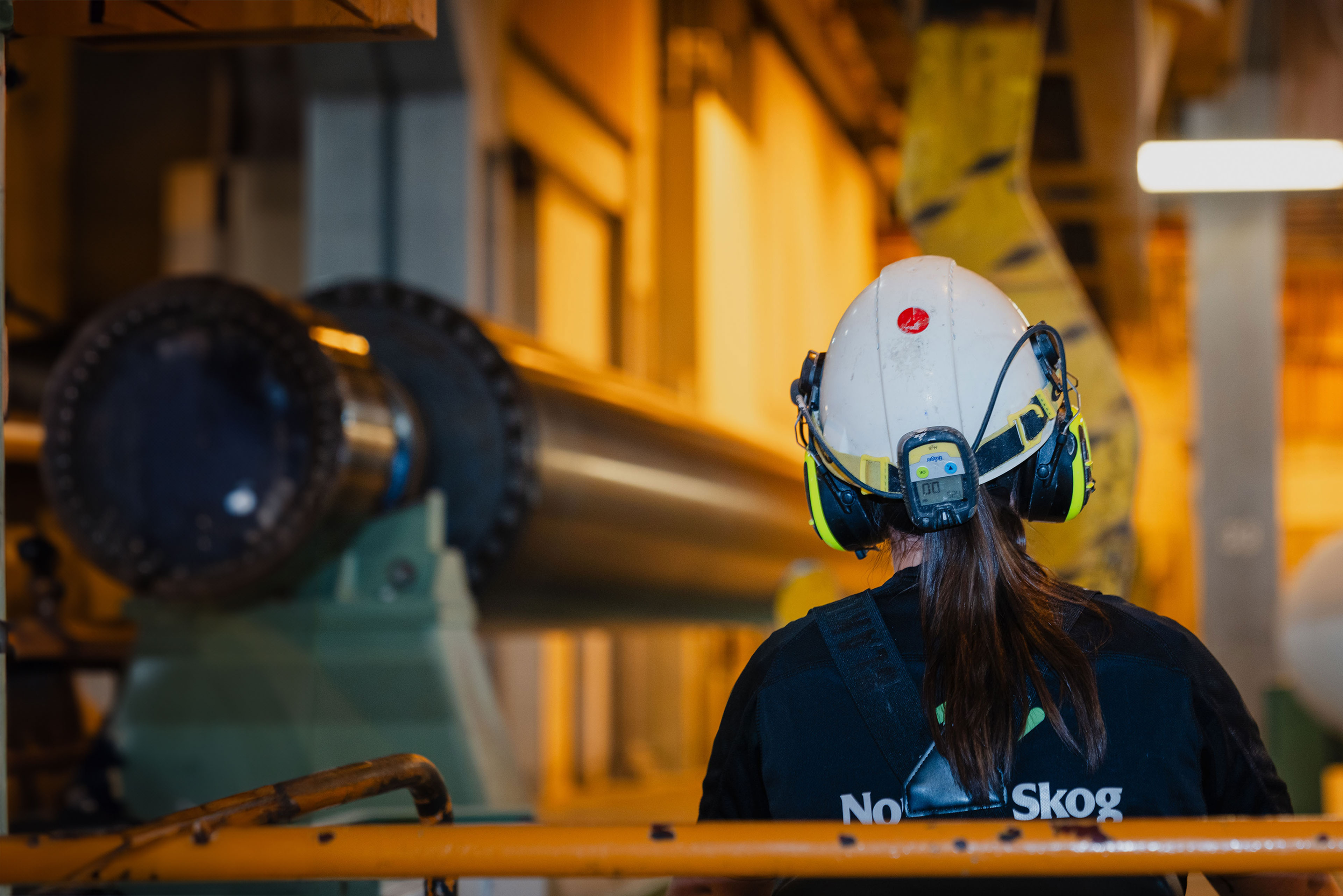How does a production system unlock competitive advantage?
As with any other industrial conglomerates, Norske Skog, a global leader in paper production, faces market changes. In 2022, Norske Skog Skogn and the EY organization collaborated to boost the former's competitiveness by revitalizing their production system. An organization’s production system outlines its value creation and continuous improvement. At Skogn, the production system no longer aligned with its operations.
We noticed differences in management across departments and wanted to strengthen the link between strategy and daily activity

The EY organization's tips to revitalize production systems:
- Start the change process with improvements that deliver rapid and visible results to engage employees.
- Test changes through pilot projects to receive feedback and foster a sense of ownership and engagement from employees.
- Adopt a "boots on the ground" approach where the project team works closely with management and is out on the field where value is created to observe, understand and talk to operators.
- Prioritize leadership training: Leaders who proactively engage during the times of change are the most impactful tool for influencing employees' fundamental attitudes and behavior toward change.
A methodology that works
A production system can contribute to reduced waste and increased customer satisfaction by optimizing use of resources, workflows and processes. In an increasingly challenging market, an efficient production system can be crucial for providing employees with consistent and clear guidelines in their daily tasks.
The collaboration between Norske Skog Skogn and the EY organization aimed at re-establishing the purpose of the production system, identifying areas for improvement and the need for new solutions, as well as test and then implement relevant solutions at the production site

The project was executed in phases where each phase involved improving selected elements of Skogn's production system. Examples of elements in a production system can include meeting structure, role descriptions, KPI structure, health, safety and environment (HSE) or 5S for workplace organization, among others. The order for analyzing and implementing the elements is often determined based on estimated improvement potential, as well as the ability to rapidly realize visible changes for our employees.
A prioritized element in the project was to establish clear function and role descriptions for the employees in production. The purpose was to optimize resource use by clarifying expectations for each role and associated areas of responsibility, as well as to avoid overlapping responsibilities or gaps between roles. Responsible, accountable, consulted, informed (RACI) matrices were introduced as a tool to ensure efficient responsibility distribution in tasks that historically had proven to be challenging. To address the challenges of too many, prolonged and unstructured meetings that did not deliver desired results, the current meeting structure was revitalized through the project. The new structure significantly reduced the duration of meetings through meeting description templates and action lists, leading to action-oriented meetings and a higher degree of organized follow-up. Initial analyses identified a need for increased structure in parts of the factory.
5S is a tool that immediately provides visible results. This helps to create trust in the project among the operators on the shop floor. Therefore, it was prioritized to introduce 5S solutions early in the project. "Employees reported that tasks took longer than necessary because they had to spend time looking for equipment. It was, therefore, important for us to establish a good system, and 5S was introduced as part of the project. Equipment and parts were reviewed, and everything was given a fixed place with clear marking. Employees have subsequently reported that this was also an important step for workplace satisfaction" opined Anders Laugen, Operations Manager at Norske Skog Skogn and responsible for the largest pilot area during the project.
To strengthen the link between the factory's overall goals and the individual employee's actions, a comprehensive goal management system was designed. This system involved an overview with so-called leading and lagging KPIs for all roles, from managers to operators, which provides employees with insight and support for decision-making processes.
We are testing whiteboard meetings that are conducted midway through the shift. In the meetings, we focus on what specific actions we can take to make it end as a 'good day' production wise.

To ensure that the revitalized production system is continuously improved, a lean improvement team has also been established at the factory. The team consists of representatives from each department who, with regular touchpoints, will be the driving force in the work to further develop the production system. The improvement team is also responsible for ensuring that best practices are standardized and shared across departments, so that we break down silos and benefit from learning across the entire organization.
Lower costs, increased efficiency and better use of resources
The project has laid the foundation for a culture of continuous improvement through the involvement of all levels within the organization in the departments that have been involved so far. We have introduced a range of new tools and methods based on lean principles that have made it easier for us to operate smart and have given us a starting point for further improvement. The project's results have generated enthusiasm, and we are seeing that employees are taking initiatives beyond the scope of the project.

The project at Skogn has already generated several positive outcomes. Compared to the period before, the project has resulted in shorter meetings and generally more stable production. Shorter meetings free up time for more value-creating activities and indirectly lead to cost savings. Employees experience a better meeting structure with increased focus on actions.
We are seeing an increase in the average time between each production interruption. Delegating authority to employees closest to value creation has given the organization a greater degree of agile processes for problem solving, further enhanced by tools to break down challenges into manageable actions

Based on this success, the revitalization of the production system has marked an important turning point for Norske Skog Skogn. This will serve as the foundation for further improvements in the future through methodical work where all employees contribute.
Contact us
Interested in the changes we have made here?
Contact us to find out more.


